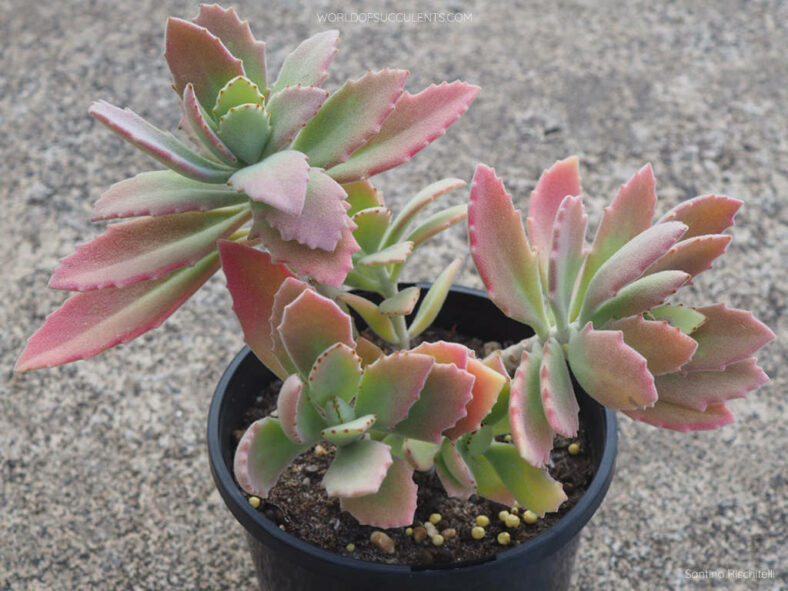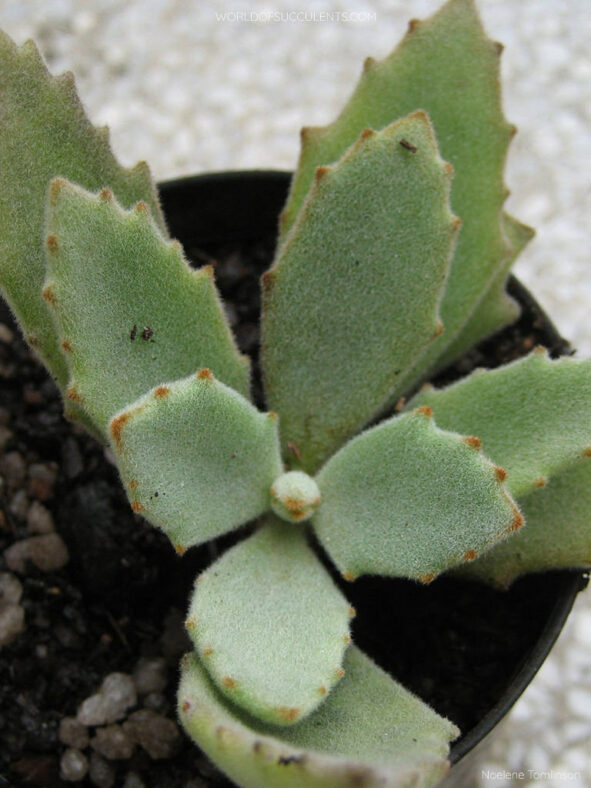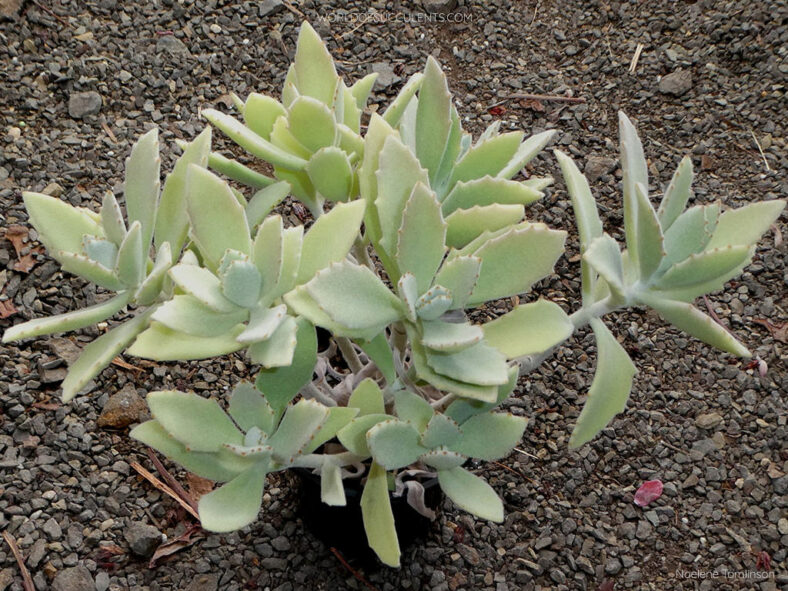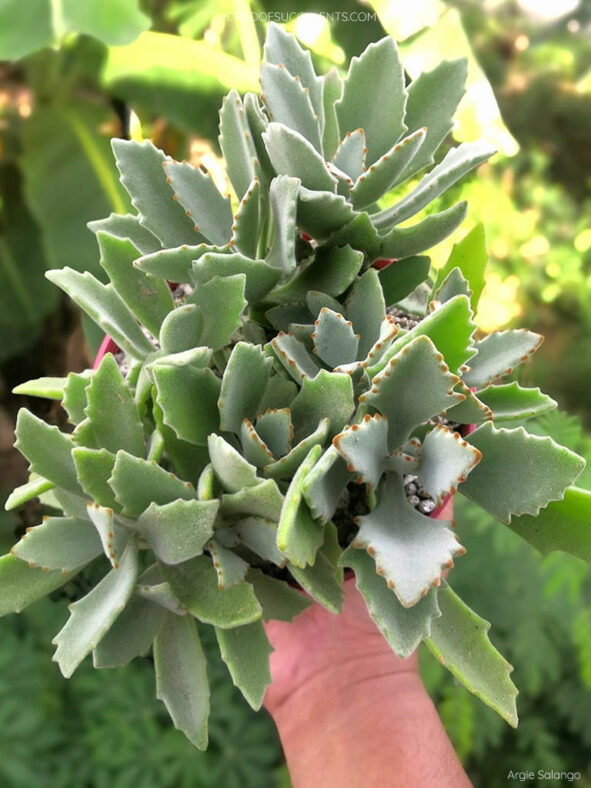Kalanchoe × gildenhuysii is a beautiful hybrid succulent with fuzzy-textured foliage. It was described in 2020 by Gideon F. Smith and Estrela Figueiredo.
Scientific Name
Kalanchoe × gildenhuysii Gideon F.Sm. & Figueiredo
Scientific Classification
Family: Crassulaceae
Subfamily: Sedoideae
Tribe: Kalanchoeae
Genus: Kalanchoe
Etymology
The specific epithet "gildenhuysii" (pronounced gil-den-HEW-see-eye) probably honors the botanist Sean D. Gildenhuys.
Origin
Kalanchoe × gildenhuysii is a hybrid that results from a cross between Kalanchoe millotii and Kalanchoe tomentosa.
Description
Kalanchoe × gildenhuysii is a beautiful succulent shrublet with erect, basally woody branches and fleshy, furry leaves that have brown-tipped teeth on their margins. This hybrid shares some characteristics with its parents but has some unique features. Unlike Kalanchoe millotii, it has more lance-shaped leaves, brown-tipped teeth along the margins, and pink-tinged flowers. Compared to Kalanchoe tomentosa, it has broader leaves with distinctly toothed margins and smaller, less colorful flowers. The leaves can take on pink or brown hues when the plant is grown in full sun.
During early winter and spring, Kalanchoe × gildenhuysii produces dense clusters of flowers on erect stalks.

How to Grow and Care for Kalanchoe × gildenhuysii
Light: Kalanchoe × gildenhuysii grows best in full sun but usually appreciates some partial shade during the hot summer days. When growing indoors, place it near a window with indirect sunlight. If it does not receive enough light, it may stretch.
Soil: The plant needs soil that drains well and doesn't like "wet feet." A commercial potting mix for succulents will work well.
Temperature: Kalanchoe × gildenhuysii thrives in heat and humidity but cannot handle frosts. It grows best in USDA Plant Hardiness Zones 10a to 11b, with average minimum winter temperatures ranging from 30°F to 50°F (- 1.1°C to 10°C).
Watering: Water the plant thoroughly from spring to fall, but allow the soil to dry between waterings. Overwatering can cause stem rot. Reduce watering during winter; only water it enough to prevent the leaves from shriveling.
Fertilizing: Fertilize occasionally during the growing season with a balanced fertilizer diluted to half or quarter strength, and apply it every two weeks.
Repotting: The plant thrives better when it is repotted frequently. For optimum growth, repot it every two years in spring. Go up one pot size every time you repot.
Propagation: Kalanchoe × gildenhuysii can be easily propagated by leaf and stem cuttings. For best results, take cuttings in spring.
Learn more at How to Grow and Care for Kalanchoe.
Toxicity of Kalanchoe × gildenhuysii
Kalanchoe × gildenhuysii is not toxic to people but should be kept away from pets because consuming it may cause vomiting, diarrhea, and heart arrhythmias.
Links
- Back to genus Kalanchoe
- Succupedia: Browse succulents by Scientific Name, Common Name, Genus, Family, USDA Hardiness Zone, Origin, or cacti by Genus
Photo Gallery
Click on a photo to see a larger version.


